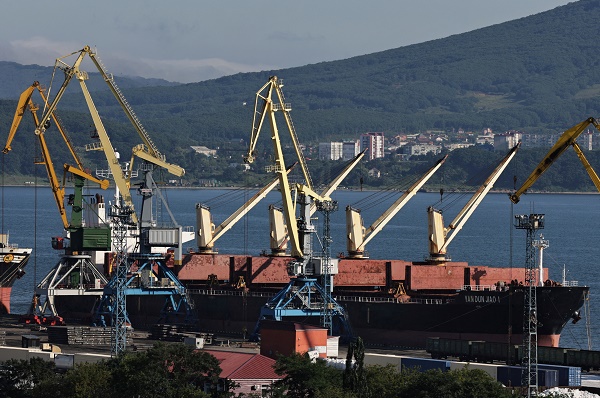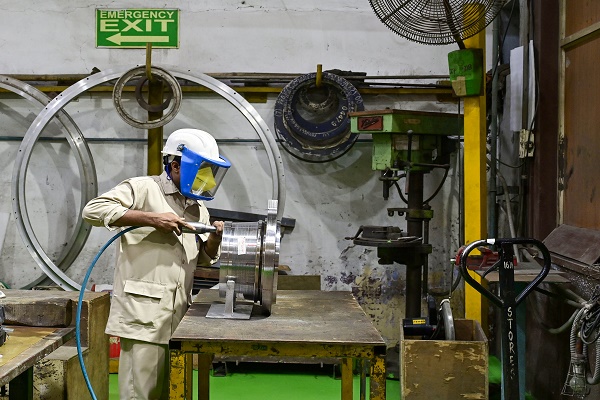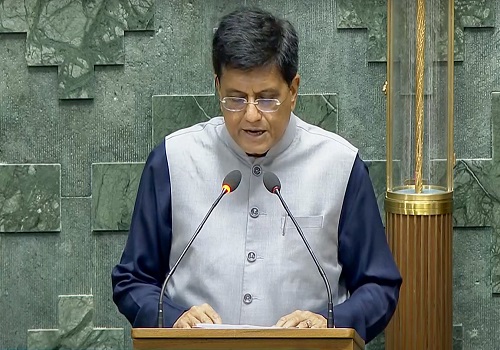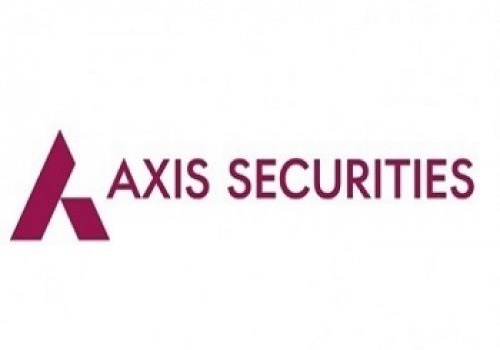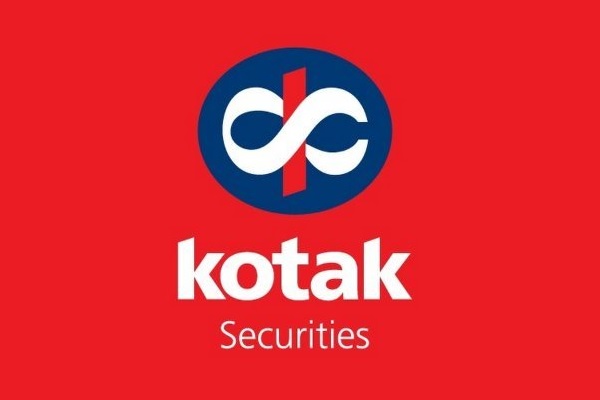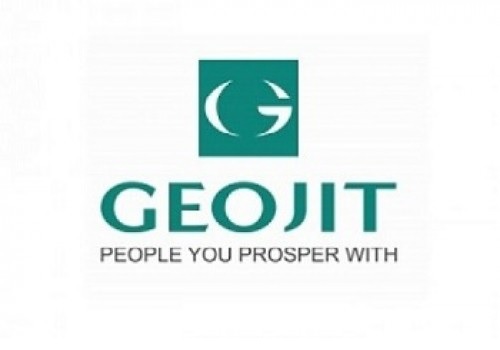Jeera trading range for the day is 21760-22740 - Kedia Advisory

Gold
Gold prices settled higher by 0.32% at Rs 92,637, buoyed by a weakening U.S. dollar following economic data that hinted at a slowdown. The softer greenback made gold more attractive to holders of other currencies. Market sentiment was further lifted by signs of renewed trade dialogue, as China's commerce ministry confirmed the U.S. willingness to negotiate on tariffs, and President Trump hinted at potential trade deals with India, Japan, and South Korea. Additionally, his executive order easing auto tariffs helped ease market tension. In India, gold demand rebounded on the back of festive buying and a correction in prices from recent record highs. For the first time in five months, domestic markets swung from discounts to premiums—starting the week with a $24/oz discount and ending with a $3/oz premium. Similar trends were seen globally, with Chinese dealers charging $34–$48/oz premiums and moderate premiums in Hong Kong, Singapore, and Japan, reflecting healthy regional demand. According to the World Gold Council, global gold demand rose 1% year-on-year to 1,206 metric tons in Q1 2025, driven by a 170% surge in investment, including inflows into gold ETFs and a 14% increase in bar demand. Coin demand, however, slumped 32%, although China saw a 12% increase in bar and coin buying. Technically, the market is under short covering, with open interest down by 0.36% to 14,786. Gold finds support at Rs 92,185, with a break below potentially testing Rs 91,740. Resistance is seen at Rs 93,260, and a move above could take prices to Rs 93,890.
Trading Ideas:
* Gold trading range for the day is 91740-93890.
* Gold gains as dollar was on the backfoot as the latest U.S. data pointed to an economic slowdown.
* US non-farm payrolls increased by 177,000 jobs last month
* China evaluating US offer to negotiate tariffs
Silver
Silver prices declined by 0.7% to Rs 94,064 as easing global trade tensions reduced the demand for safe-haven assets. Market sentiment shifted after U.S. President Donald Trump expressed optimism regarding potential trade agreements with India, Japan, and South Korea, alongside China’s openness to resume trade negotiations. However, Beijing emphasized that meaningful talks require the U.S. to lift unilateral tariffs. Concurrently, silver's industrial demand outlook weakened amid soft economic data. The U.S. economy unexpectedly contracted by 0.3% in Q1 2025—the first such decline in three years. China’s manufacturing PMI dropped to a 16-month low, primarily due to a sharp fall in export orders. Despite these headwinds, the structural fundamentals of the silver market remain supportive. The Silver Institute projects a fifth consecutive annual deficit in 2025, with a shortfall of 117.6 million ounces. Global silver demand is expected to hold steady at 1.2 billion ounces, driven by a record-setting industrial fabrication forecast exceeding 700 million ounces, thanks to ongoing gains in green energy sectors. Physical investment demand is forecast to rise by 3%, particularly in Europe and North America, although jewelry and silverware demand—especially from India—is projected to decline due to elevated prices. From a technical perspective, silver is under fresh selling pressure as open interest rose by 9.67% to 18,227, while prices dropped Rs 665. Support is now placed at Rs 93,440, with a break below potentially testing Rs 92,810. Resistance is seen at Rs 95,065, and a breakout could see prices climb to Rs 96,060.
Trading Ideas:
* Silver trading range for the day is 92810-96060.
* Silver prices fell as easing global trade tensions dampened demand for safe-haven assets.
* The U.S. economy added 177,000 jobs in April 2025, a slowdown from the downwardly revised 185,000 in March
* Silver’s industrial demand outlook came under pressure amid weaker economic data from major economies.
Crude oil
Crude oil prices declined by 0.64% to Rs 4,940, pressured by a confluence of bearish factors including ongoing trade tensions, softening global demand signals, and the prospect of increased supply. Weak macroeconomic indicators weighed on sentiment, notably a surprise contraction in U.S. GDP and the sharpest decline in China’s manufacturing activity in over two years. Further dampening the outlook were expectations that OPEC+, led by Saudi Arabia, may consider lifting output at its upcoming meeting, especially after Riyadh signaled comfort with lower price levels. Despite these bearish elements, downside was somewhat limited due to renewed optimism over easing U.S.-China tensions. China’s openness to restart trade discussions, following repeated U.S. overtures, and President Trump’s hints at potential trade deals with China provided some support. Additionally, Trump’s warning of secondary sanctions on countries purchasing Iranian oil added a layer of bullish sentiment. From the supply perspective, U.S. crude inventories fell by 2.696 million barrels, defying expectations of a build, according to the EIA. However, stocks at the Cushing hub rose by 682,000 barrels. Gasoline inventories showed a significant drawdown of 4.002 million barrels, while distillate stocks rose by 0.937 million barrels. GloballyTechnically, the market is undergoing long liquidation, with open interest down by 1.31% to 18,743. Crude is now finding support at Rs 4,876, with a break below potentially testing Rs 4,812. Resistance is seen at Rs 5,023, and a move above could open the path to Rs 5,106.
Trading Ideas:
* Crudeoil trading range for the day is 4812-5106.
* Crude oil prices fall amid weak US GDP and China factory data.
* Trade tensions and global demand fears weigh on sentiment.
* OPEC+ may raise output; Saudi Arabia signals comfort with lower prices.
Natural gas
Natural gas prices surged by 5.51% to settle at Rs 306.6, driven by a decline in output and a revision in demand forecasts for the current week. Production in the Lower 48 U.S. states dropped to 103.0 billion cubic feet per day (bcfd) in early May, down from the record 105.8 bcfd in April. Daily output was projected to dip further to a two-month low of 102.6 bcfd, reflecting tightening supply conditions. Gas demand, including exports, is expected to average 98.8 bcfd this week, before tapering to 96.0 bcfd and 95.5 bcfd in the following weeks, as temperatures across the Lower 48 are forecast to stay warmer than normal through mid-May. Meanwhile, U.S. utilities added 107 billion cubic feet of gas to storage in the week ending April 25, marking the largest build in two years, though this aligns with expectations and broader trends of high production and mild weather. On the longer-term front, the U.S. Energy Information Administration forecasts record highs in both gas output and demand in 2025, with dry gas production set to reach 104.6 bcfd and consumption climbing to 90.7 bcfd. Technically, the market is under fresh buying pressure with a 33.46% jump in open interest to 15,206 contracts. Support is pegged at Rs 293.8, with further downside risk to Rs 280.9, while resistance lies at Rs 313.8, and a break above may lead to a test of Rs 320.9.
Trading Ideas:
* Naturalgas trading range for the day is 280.9-320.9.
* Natural gas climbed on a drop in output over recent days and forecasts for more demand.
* Gas stockpiles were around 1% above the five-year normal.
* US utilities added 107 billion cubic feet of gas to storage to 2.041 trillion cubic feet
Copper
Copper prices rose by 1.27% to settle at Rs 841.25, buoyed by improved investor sentiment following signs of progress in global trade negotiations. U.S. President Donald Trump’s remarks about potential trade agreements with India, Japan, South Korea, and his optimism regarding a deal with China reduced fears of a global economic downturn, thereby lifting base metal markets. This recovery followed a steep drop earlier in the week, when copper prices tumbled over 5% due to disappointing economic data—namely, a 0.3% contraction in U.S. GDP and a sharp decline in China’s manufacturing PMI to a 16-month low. From a supply perspective, Chile, the world’s top copper producer, reported a 9.1% year-on-year increase in copper output for March, totaling 477,049 metric tons. Despite the rise in supply, copper inventories in warehouses monitored by the Shanghai Futures Exchange dropped sharply by 23.5% from the previous week, signaling firm near-term demand. Meanwhile, China’s imports of unwrought copper and copper products fell 1.4% in March year-on-year and were down 5.2% for the first quarter of 2025, driven by stronger U.S. copper prices diverting shipments away from China. Technically, the market is undergoing short covering, with a 6.45% drop in open interest to 7,010 contracts. Copper is finding support at Rs 835.4, with further downside risk to Rs 829.4, while resistance is seen at Rs 846.1, and a move above could test Rs 850.8.
Trading Ideas:
* Copper trading range for the day is 829.4-850.8.
* Copper gains as signs of progress in trade negotiations lifted market sentiment.
* However, disappointing US GDP data and weakening Chinese manufacturing activity stoked recession fears.
* Copper output in Chile, rose 9.1% year-on-year in March to 477,049 metric tons.
Zinc
Zinc prices climbed by 0.59% to settle at Rs 245.7, supported by renewed optimism over U.S.-China trade negotiations. President Donald Trump’s remarks about a "very good chance" of reaching a deal, alongside reports of the U.S. seeking talks with China to address steep tariffs, injected positive sentiment into the metals market. Fundamentally, inventories at the Shanghai Futures Exchange declined by 5.6% from the prior week, suggesting tighter availability in the short term. However, the broader market outlook remains mixed. Citi has revised down its 2025 zinc price forecast to $2,630/ton from $2,750/ton, reflecting expectations of a global refined zinc surplus. According to the International Lead and Zinc Study Group (ILZSG), global refined zinc production is expected to increase by 1.8% to 13.73 million tons in 2025, outpacing demand growth of just 1% to 13.64 million tons. On the supply side, production cuts at Nyrstar's Hobart smelter—amounting to 25% of its 260,000-ton annual capacity—and the anticipated slowdown at Alaska’s Red Dog Mine, the world’s largest zinc mine, are key bullish factors. Meanwhile, China’s refined zinc production jumped nearly 14% month-on-month in March, driven by rising treatment charges and sulfuric acid prices, which boosted smelter output. Technically, the market is witnessing short covering, with open interest dropping by 5.43% to 3,190 contracts while prices moved up Rs 1.45. Zinc now finds support at Rs 243.8, with further downside potential to Rs 242, while resistance is seen at Rs 247.3, and a break above could see prices testing Rs 249.
Trading Ideas:
* Zinc trading range for the day is 242-249.
* Zinc gains as hopes for progress in U.S. tariff talks with China provided support.
* U.S. President believed there was a "very good chance" his administration could do a deal with China.
* Zinc inventories in warehouses monitored by SHFE fell 5.6% from last Friday, the exchange said.
Aluminium
Aluminium prices rose by 0.76% to settle at Rs 232.65, driven by improved investor sentiment amid easing global trade tensions. Market optimism was fueled by U.S. President Donald Trump’s statements indicating potential trade agreements with India, Japan, and South Korea, and his optimism over a possible resolution with China. This shift in tone alleviated some of the pressure from heightened tariffs, which had previously weighed heavily on industrial metals. Meanwhile, U.S. economic data showed a surprising 0.3% contraction in Q1 2025—its first in three years—largely due to surging imports and weakening consumer demand, adding a layer of caution to the outlook. On the supply side, global primary aluminium production rose by 2.3% year-on-year in March to 6.227 million tonnes, according to the International Aluminium Institute. China's aluminium production increased 4.4% in March year-on-year and 3.2% over the first quarter, signaling ongoing robust supply from the world’s top producer. However, inventories in Shanghai Futures Exchange-monitored warehouses fell by 1.5% from the previous week, reflecting modest tightening in short-term availability. China’s exports of unwrought aluminium and related products jumped by 17% year-on-year over the first ten months, highlighting strong global demand. Technically, the market is witnessing short covering, with a 1.05% drop in open interest to 5,198 contracts while prices rose by Rs 1.75. Aluminium is finding support at Rs 230.5, with a potential decline toward Rs 228.4, while resistance is seen at Rs 234.2, and a breakout above could push prices to Rs 235.8.
Trading Ideas:
* Aluminium trading range for the day is 228.4-235.8.
* Aluminium gained as optimism around global trade negotiations buoyed sentiment.
* Aluminium inventories in warehouses monitored by the Shanghai Futures Exchange fell 1.5% from last Friday.
* Data showing the US economy unexpectedly contracted by 0.3% on an annualized basis in the first quarter.
Cottoncandy
Cottoncandy prices declined by 0.5% to settle at Rs 53,920 amid long liquidation, driven by weaker buying sentiment despite a downward revision in domestic crop projections. The Cotton Association of India (CAI) has further trimmed its 2024-25 production estimate by 4 lakh bales to 291.30 lakh bales (of 170 kg each), mainly due to lower output from Maharashtra. This reflects ongoing challenges in domestic cotton cultivation, prompting expectations of increased reliance on imports. Imports for the season are now projected to more than double to 33 lakh bales, up from 15.2 lakh bales last year, highlighting tighter domestic supply conditions. However, despite lower production, domestic consumption remains flat, limiting upward price momentum. Mills appear adequately stocked and are not showing urgent buying interest, which is capping price gains. As of March-end, total cotton supply, including opening stocks and imports, stood at 306.83 lakh bales, while closing stocks for the season are estimated to decline to 23.49 lakh bales from 30.19 lakh bales a year earlier. Internationally, the U.S. cotton balance sheet saw a slight downward revision in exports and a corresponding increase in ending stocks. Global production saw minor reductions, offsetting a rise in Chinese output. Mill use and trade have also dipped, particularly in China and Indonesia, signaling softer global demand. Technically, Cottoncandy is under pressure from long liquidation with open interest down by 0.4% to 248 contracts. Support lies at Rs 53,480, with a break below potentially leading to Rs 53,030. Resistance is at Rs 54,340, with further upside capped near Rs 54,750.
Trading Ideas:
* Cottoncandy trading range for the day is 53030-54750.
* Cotton dropped on profit booking after prices gained as CAI expects a shrinkage in the domestic crop
* CAI has estimated the total cotton supply till the end of March including the imports at 306.83 lakh bales.
* Cotton exports for the 2024-25 season are pegged at 16 lakh bales, lower by 12.36 lakh bales
* In Rajkot, a major spot market, the price ended at 26068.2 Rupees gained by 0.1 percent.
Turmeric
Turmeric prices surged by 2.18% to Rs 14,072, driven by a decline in market arrivals and ongoing concerns about lower production estimates. Daily arrivals dropped significantly to 36,942 bags, down from 47,020 in the previous session, as farmers held back supplies expecting higher off-season prices. Despite an increase in acreage this season to 3.30 lakh hectares—up 10% from last year—the production outlook remains under pressure due to untimely rains impacting productivity. Reports suggest that yields could fall by 10–15%, particularly in regions like Nanded, where rhizome size is smaller and crop rot is evident. Concerns about slow rhizome development and persistently low yield estimates are lending additional strength to the market. Export demand has remained robust, with turmeric exports during April–January 2025 rising by 12.93% to 1.48 lakh tonnes compared to the same period a year ago. Although January exports fell by over 23% from December, they were still 12.18% higher year-on-year. Imports during the same period also surged by 70.13% to 20,043 tonnes, reflecting tight domestic supply and rising prices. Notably, January 2025 imports dropped significantly compared to both December and January 2024, indicating reduced foreign availability or subdued demand at higher price levels. Technically, the market is under short covering with open interest falling by 13.11% to 11,495, indicating that traders are covering their positions amid rising prices. Turmeric has immediate support at Rs13,748 and resistance at Rs 14,306; a move above could lead to a test of Rs 14,542.
Trading Ideas:
* Turmeric trading range for the day is 13762-14930.
* Turmeric gained as arrivals declined to 36,942 bags from 47,020 bags as farmers held back supplies
* Further, persistent concerns about low arrivals and lower production estimates supported prices.
* New crop yields are expected to be 10-15% lower this year, with the Nanded region particularly affected.
* In Nizamabad, a major spot market, the price ended at 14615.55 Rupees gained by 0.72 percent.
Jeera
Jeera prices edged up by 0.41% to Rs 22,015, supported by short covering after recent declines driven by ample supplies and subdued export interest. Total arrivals in major mandis increased to 32,900 bags from 28,000 bags in the prior session, heightening supply-side pressure. The delayed sowing in Gujarat and Rajasthan—due to unfavourable weather—postponed the new crop's arrival by nearly a month. Despite this delay, the overall production for the current season is expected to match last year’s levels due to improved crop conditions and favourable sowing coverage. While domestic demand remains weak, export data paints a more optimistic picture. Jeera exports surged 66.98% year-on-year to 182,167.70 tonnes during April–January 2025. However, January exports dipped 5.5% compared to December, suggesting some softening in short-term demand. Nonetheless, January 2025 exports were 37.82% higher than January 2024, reflecting sustained overseas interest. On the flip side, jeera imports have plummeted by 93.84% during the same period to just 1,071.91 tonnes, indicating strong reliance on domestic output. January imports sharply declined by over 80% from December and nearly 87% from the previous year, reinforcing the domestic market’s self-sufficiency. In Unjha, a key spot market, prices closed nearly flat at Rs 22,492.95. Technically, the market is in short covering, with open interest dropping by 4.82% to 4,566 contracts. Jeera has immediate support at Rs 21,670, with further downside potential to Rs 21,330. On the upside, resistance is seen at Rs 22,240, and a move above could lead to a test of Rs 22,470.
Trading Ideas:
* Jeera trading range for the day is 21760-22740.
* Jeera gained on short covering after prices dropped due to comfortable supplies
* Total arrivals in major mandis rose to 32,900 bags from 28,000 bags, increasing supply side.
* The current season is expected to have similar production levels as last year.
* In Unjha, a major spot market, the price ended at 22794.95 Rupees gained by 0.22 percent.
Views express by all participants are for information & academic purpose only. Kindly read disclaimer before referring below views
_Securities_(600x400).jpg)

.jpg)

.jpg)
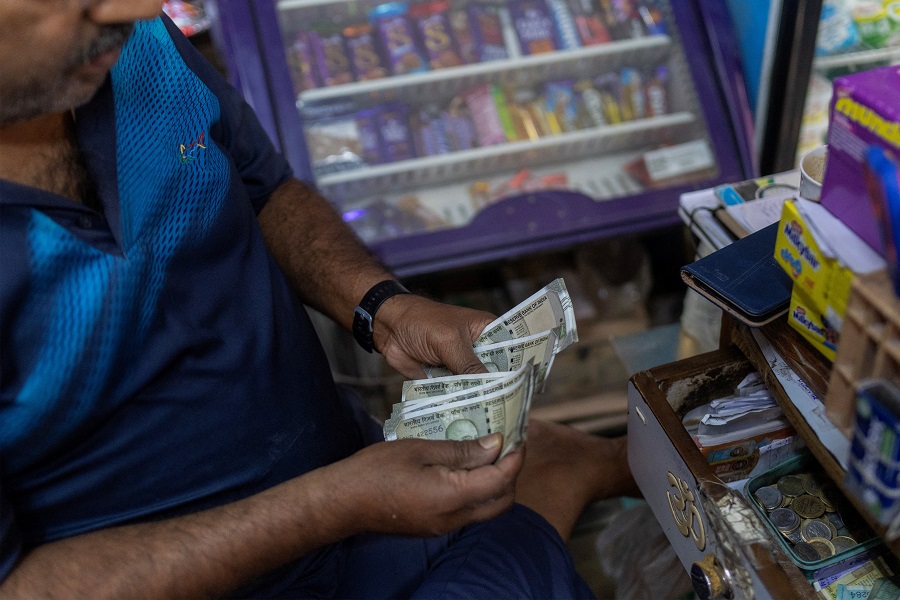
.jpg)
.jpg)

